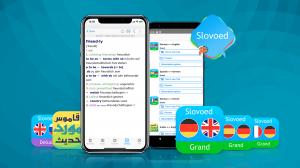
Some years ago, in a fit of religious enthusiasm, I decided that I wanted to learn Greek. This was so that I could read the New Testament in its original language, a desire I could not really explain, other than as a general sense that I was seeking more from Scripture. I was heartened when a classicist friend, knowing how bad I was at learning languages, reassured me that the kind of Greek I needed to learn for this project was not the difficult kind—the Attic Greek that he and his colleagues read—but Koine Greek, which he described as “Dick and Jane” primer Greek, which would be much easier. I remember all of this somewhat bitterly because I still struggled with Koine. After memorizing a grammar book and what seemed like enough flash cards to account for all five thousand or so distinct words that appear in the New Testament, I began trying to get through the Gospel of John, supposedly the easiest of the books, and then the Apostle Paul’s more difficult letter to the Galatians. It should have helped that I knew these texts well enough to summarize whole chapters and quote many verses from memory, but it didn’t. In the end, all of the hours that I poured into my pidgin Greek resulted in little more than an abiding admiration for those whose calling it is to translate sacred literature.
It’s not that I lacked for other Biblical translations at the time. My grandmother raised me on the King James Version, but my childhood church followed the common lectionary, with weekly readings from the New Revised Standard Version, which is also what we were required to use when we went through confirmation. Over the years, I’ve collected two dozen or so others: a red-letter version in which the words of Christ appear in color; a handful of editions annotated by scholars, some illustrated with sketches or maps; and a few truly wild editions, such as the novelist Reynolds Price’s “Three Gospels,” which leaves out Matthew and Luke but includes one Price himself wrote called “An Honest Account of a Memorable Life: An Apocryphal Gospel.” The Bible has been translated into more than seven hundred languages, and there are hundreds of versions in English alone, going as far back as the one produced by the fourteenth-century reformer John Wycliffe and his Bible Men (better known as Lollards), and continuing in the last half century with everything from “The Living Bible,” a plainspoken paraphrase by Kenneth Taylor first published in the nineteen-seventies, to Clarence Jordan’s civil-rights-era “Cotton Patch Gospel,” in which the Holy Land is transposed to the American South; instead of being crucified in Jerusalem, Jesus is lynched in Atlanta.
To compare any two of these translations is to see how elastic phrases can become, their meaning stretching until one thing becomes something else entirely. Even those readers without any Greek at all can appreciate how theologies shape and are shaped by the text, with significance written into certain words and written out of others. To encounter the text in its original language seems to promise a way out of such superimpositions—the “real” language of God or the “authentic” version of what Christ commanded. Such temptations lurk in the margins of any holy text, which is why even struggling language learners like me have tried to master Koine Greek, and why translations like one just published by Sarah Ruden, simply titled “The Gospels: A New Translation,” hold such appeal.
A Quaker philologist, Ruden has translated Augustine’s “Confessions” and Virgil’s “Aeneid,” along with plays by Aeschylus, Sophocles, and Euripides; her critical books include a commentary on Biblical translation called “The Face of Water” and another on the Apostle Paul called “Paul Among the People.” Like those earlier works, her new translation of the four canonical accounts of Christ’s life is somehow both clever and wry, serious and sincere. In her introduction, Ruden notes that her preference is “to deal with the Gospels more straightforwardly than is customary,” and, in a sense, she does, producing a version that is, by turns, fascinating and maddening.
What would it mean to deal with the Gospels straightforwardly? First of all, as Ruden points out, it might well mean ceasing to call them “gospels,” a word that comes to us not directly from the Greek, but from Old English—specifically, from the felicitous cognate “godspel,” meaning “good news.” That is what the original readers of the gospels would have called them: εὐαγγέλιον, euangelion. Thus does Ruden offer “The Good News According to Markos,” then “Maththaios,” “Loukas,” and “Iōannēs,” early indications of her preference for transliterating rather than translating proper names, which is not particularly distracting when it comes to the “good-news-ists” Mark, Matthew, Luke, and John, but a bit more so when it comes to proper names like Kafarnaoum (Capernaum) or Surofoinikissa (Syrophoenician). She does at least offer readers the convenience of chapter and verse numbers, a convention that took hold only in the sixteenth century, which allows easy reference to other translations, including to the parallel Greek-English text on which Ruden based her translation: the Nestle-Aland “Novum Testamentum Graece.”
A wonderful thing about reading the Bible in the digital age is that the casual student needn’t try to recreate St. Jerome’s library. There are fine digital resources like the Web site Bible Gateway, which contains dozens of translations that can be compared chapter by chapter, and Bible Hub, which offers an interlinear Bible keyed to the Greek and Hebrew text, allowing anyone to page verse by verse through the diagrammed ancient languages and a full concordance of usage and meaning. But none of this renders the Gospels especially straightforward, even if you have the Greek good news in one hand and Ruden’s translation in the other. One reason is the very language in which they were written. “It is an open question how much Greek of any kind Jesus’s own circle understood or used,” Ruden writes in her introduction. “Nearly all of the words attributed to them are thus in a language they may never have voluntarily uttered, belonging to a cosmopolitan civilization they may well have despised.”
Jesus, in all likelihood, spoke Aramaic and some Hebrew, not the Greek in which his speech is recorded, and the Gospels themselves were most likely written down between three and seven decades after his death. Still, plenty of contemporaneous Jews knew Greek, which is why the Septuagint, the Greek translation of the Hebrew Bible, was undertaken and was soon in such wide circulation, used throughout the diaspora for worship and teaching. For Ruden, then, it’s important to read the preserved texts as thoughtfully as possible, while always remembering that they are both temporally and linguistically removed from the events they record and the communities they represent. With those transliterated names, for instance, she says, “nothing could be precisely what was heard in Judea, in a different language family and represented by a different alphabet,” but “the halfway nature of the names in Greek is itself a good reminder that the text was, even in its rudiments, a squinting struggle to see Jesus’ world.”
A straightforward squint it is, then, of “Iēsous the Anointed One” as Ruden calls him in the opening verse of Mark’s Gospel. From there, she carves her own rocky, rough-hewn path through four versions of the life of Christ. A verse just down the page conveys some of her deliberately awkward style: “Iōannēs [the] baptizer appeared in the wasteland, announcing baptism to change people’s purpose and absolve them from their offenses.” Compare that to the work of the nearly fifty translators who together created the King James Version: “John did baptize in the wilderness, and preach the baptism of repentance for the remission of sins.” Ruden strips away theologically laden words like “repentance” and “sin,” returning to what she calls “the self-expressive text,” which she laments “has fallen under the muffling, alien weight of later Christian institutions and had the life nearly smothered out of it.”
Perhaps, but one translator’s smothering is another’s reasoned attempt at conveying the meaning of distinctive concepts, as opposed to just distinct words. Consider “Holy Spirit,” which Ruden renders as “life breath,” and “heaven,” which she occasionally translates as “the kingdom of the skies.” Elsewhere, though, her effort to present the original text without baggage or cliché produces more engaging results: livelier dialogue, as when the disciples call Jesus “boss” instead of “master” and when Pontius Pilate, prior to the crucifixion, says “look at this guy” instead of “behold the man”; and less specialized language, as when she substitutes “analogies” for “parables” and “rescue” for “salvation.”
Sometimes, Ruden’s choices make sense of passages that earlier translations obscured. My favorite example of this involves a story found in both Mark and Matthew about the Syrophoenician woman who asks Christ to heal her daughter. Previous translations have rendered this story in such a way that Jesus seems both cold and rude, rebuking a Gentile who only wants to help her suffering child. In the New Revised Standard Version, for instance, when the Syrophoenician woman kneels before him pleading her case, his refusal sounds harsh: “It is not fair to take the children’s food and throw it to the dogs.” But Ruden points out that what most translators render as “dogs” is actually a cute diminutive form, “the rare and comical ‘little doggies,’ ” something less like an insult than like the kind of playful language you find in Aristophanes—a word choice so obviously tender and funny that it explains why, instead of leaving, the woman feels comfortable responding to Jesus in kind, saying, in Ruden’s version of Matthew, “Yes, master, but the little doggies do eat some of the crumbs that fall from their masters’ table.” That reply, evidence of the woman’s faith in God’s grace as sufficiently abundant for Jews and Gentiles alike, impresses Jesus so much that he heals her daughter right away.
I’d have been grateful for Ruden’s translation if only for those little doggies, but she finds similar humor and humanity elsewhere in the original texts, and brings much of her own to the notes and commentary—a welcome tone, since scholarly editions can sometimes be rendered dull by excessive piety. Sacred literature is rightfully loved and cherished, but too often that love can creep toward idolatry, shaping the text into something fixed and static, when ideally it is shaping us every time we encounter it. For all its idiosyncrasies—the rather emaciated “joyful favor” for “grace,” the literal but inscrutable “play actors” for “hypocrites,” and “hung on the stakes” for “crucified”—Ruden’s translation does return much of the Gospels to the fresh clay from which they were made, before they hardened into their familiar forms.
Take the third chapter of John, when a Pharisee named Nicodemus comes to Jesus under cover of darkness to ask about the miracles he was performing around Galilee. Their exchange is the source of the born-again language that animates denominations of Christianity around the globe. As Ruden renders it, Jesus tells Nicodemus that “unless someone is born anew—taking it from the top—he can’t see the kingdom of God.” “Anew” or “again” and “from above” are all perfectly appropriate translations of the words that Jesus uses; he’s deploying a pun, which Ruden conveys to contemporary readers with the slightly wordier, almost hokey “taking it from the top.” Unsure of what Jesus means, Nicodemus asks, “How can a person be born when he’s old? He can hardly go into his mother’s womb a second time and then be born again, can he?” It’s a puzzling passage, the subject of so many sermons and theologies and conversion stories that it’s refreshing to read Ruden’s droll gloss: “Nicodemus never does understand what Jesus is saying about salvation; nor, apparently, is he meant to; nor, actually, can I.”
Understanding is what many people seek from sacred literature, and what the people in the Gospels sought in their own encounters with Jesus. Sometimes this is readily available, and the obstacle, if any, is not comprehension but commitment; would that it were only a problem of translation that kept so many of us from answering Christ’s call in Matthew 25 to feed the hungry, provide hospitality to the stranger, and visit the imprisoned. But elsewhere the meaning of the Gospels can be genuinely elusive. Reading Sarah Ruden’s translation during Lent, I was struck by how often those who meet Jesus do not understand his teachings. Even the disciples who knew him so well, observed him so closely, and heard so many of his sermons—not even they understand much of what he tells them. They beg him for explanations of his parables, express puzzlement over his invocation of earlier scriptures, and seem confused when his prophecies actually come to pass, including, as hundreds of millions of Christians celebrated on Easter Sunday, his very resurrection. That confusion and misprision is of course quite like our own, which is why so many of us return to the Scriptures regularly in worship and in private or communal study: because, when it comes to understanding, reading the Gospels once is never enough.
That is not because we are reading the wrong version. The idea that any single translation can clarify the Bible’s ambiguities and reveal its singular meaning is the fiction of fundamentalism. Even some of those who believe the text to be inerrant or the inspired Word of God do not disrespect it by suggesting it is simple or straightforward. At present we are awash in fine translators who strive for what are heralded as more accurate, historically sensitive versions—not only Ruden with “The Gospels,” but Robert Alter with his “The Hebrew Bible” and David Bentley Hart with what he calls “an almost pitilessly literal” “The New Testament.” Yet no amount of fidelity in translation can solve the mysteries of what these texts mean, or clarify what was obscure even to the original audiences who confronted no language barrier. Those men and women who encountered Jesus in his ministry and the authors of these earliest records of his life and death and resurrection struggled for words that adequately conveyed their experiences. As always, but especially when it comes to describing the numinous, the inadequacy of language is not only a problem for readers, but for writers, too.
This becomes especially clear when one reads all four of the canonical Gospels in tandem, as opposed to the way many are accustomed to reading them, in abbreviated passages or selected verses, like songs on the radio instead of album by album, artist by artist. Read cover to cover, Sarah Ruden’s four Gospels are strikingly different from one another, not in content, exactly, since much of the material is repeated, but in subjectivity, language, order, and attention. Here’s her version of the Lord’s Prayer in Matthew:
Our father in the skies,
Let your name be spoken in holiness.
Let your kingdom arrive.
Let what you want happen
On earth, as in the sky.
Give us today tomorrow’s loaf of bread.
And free us from our debts,
As we too have set our debtors free.
And don’t bring us into the ordeal
No rescue us from the malicious one.
And in Luke:
Father, Let your name be spoke in holiness.
Let your kingdom arrive.
Give us day by day tomorrow’s loaf of bread,
And set us free from our offenses,
Since we ourselves have set free everyone bound to us likewise.
And do not bring us into the ordeal.


















